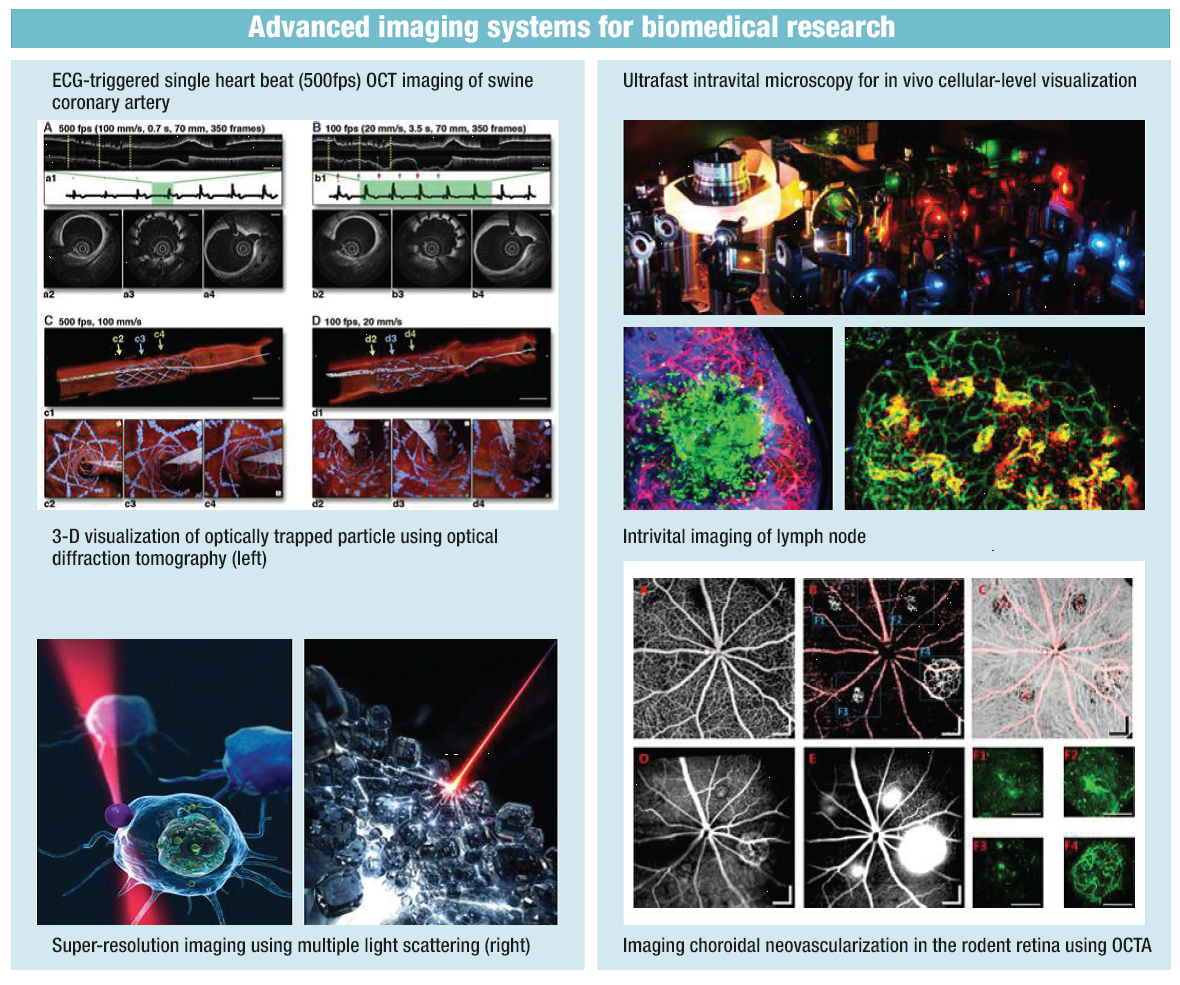
Biophotonics
The overall goal is to develop innovative biomedical imaging technology harnessing light in order to understand, diagnose, and treat human disease. Research focus is on developing needs-driven disease-oriented optical imaging technology to fill the unmet needs in life science and health care. Biophotonics Center at KIHST encompass researchers in multiple disciplines including engineering, physics, chemistry, biology and medicine to accommodate an active inter-disciplinary collaboration to perform the development of diverse optical imaging technologies for basic and translational biomedical researches, which includes advanced optical microscopy, endomicroscopy, and optical coherence tomography.

- Intravital Microscopy for In Vivo Molecular/Cellular Imaging
Research focus is on developing novel in vivo micro-visualization techniques for live animal in a single cell to single molecule resolution. We are developing various intravital microscopy technique based on ultrafast laser-scanning custom-built confocal, two-photon microscopy, and endomicroscopy, enabling a direct in vivo cellular-level 3D visualization of various animal model for human diseases. It enables a precise and direct monitoring of cellular dynamics in extremely complex in vivo microenvironments those were impossible to be mimicked by conventional ex vivo or in vitro model, providing unprecedented insights those were impossible to obtain by conventional microscopy for static 2D observation. Through collaboration with biomedical researchers, the newly developed imaging platform is now extensively utilized to answer questions those are important but difficult to investigate by conventional approaches. - Adaptive Optics and Complex Photonics
Light propagation in complex media such as biological tissues is a fundamental physical phenomenon, and it has also various applications. Recently, the deterministic nature of light scattering has been utilized, demonstrating the coherent control of multiple scattering in tissues using several wavefront shaping methods. Measuring and controlling the wavefronts of speckle light fields in turbid media. Our envision is that optical wavefront measuring and shaping techniques will have important functions in the study, diagnosis, and assessment of several diseases in the near future. - Optical Coherence Tomography
Optical Coherence Tomography (OCT) is well-suited for three-dimensional microscopic imaging over large tissue volume in vivo. Our researches focus on development and application of multi-functional OCT systems and endoscopic multi-functional/multi-modal systems. While developing advanced imaging methods and instrumentation is the key element to the success of our research, many of works will be mostly highlighted through translation of our novel technologies to clinical and pre-clinical studies. Our main applications include intravascular imaging, retinal imaging, neurovascular imaging, and multi-functional imaging of small animal models. We put lots of efforts and emphasis on inter/multidisciplinary collaborations to address and solve important problems in medicine and biology.
- Intravital Microscopy
- Endomicroscopy
- Confocal Microscopy
- Two-photon Microscopy
- Diffraction Optical Tomography
- Fourier Transform Light Scattering


